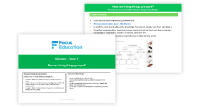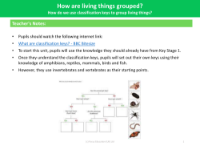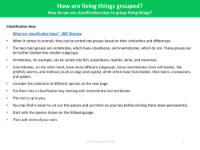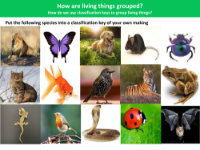How do we use classification keys to group living things? - Presentation
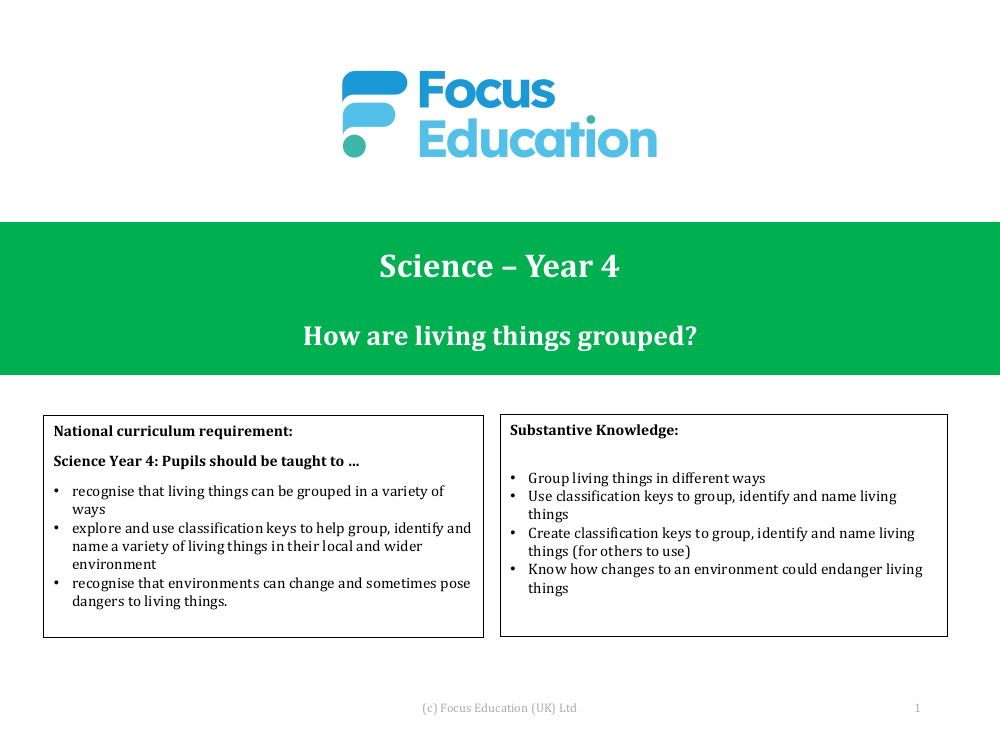
Science Resource Description
In the National Curriculum for Science Year 4, pupils are expected to understand that living things can be grouped in various ways and to use classification keys to help group, identify, and name a variety of living things in their local and wider environment. They also learn that environments can change and may sometimes pose dangers to living things. The substantive knowledge covers grouping living things, using and creating classification keys, and understanding how environmental changes can endanger living things. This educational framework sets the stage for students to explore the diversity of life and the importance of categorisation in biology.
Classification keys are essential tools in biology that allow students to group living things based on shared characteristics. These keys help in identifying and naming flora and fauna by guiding students through a series of questions leading to distinctions between different species. For example, students might use a key starting with the most general classification, such as determining whether an organism is a vertebrate or an invertebrate, and then further categorise it into subgroups like mammals, birds, or insects. This process not only aids in understanding the vast array of life on Earth but also highlights the impact of environmental changes, such as deforestation and pollution, on these groups. Vocabulary such as 'flowering plants', 'invertebrates', and 'industrial waste' is introduced, providing the language needed to discuss and understand these concepts in depth.
